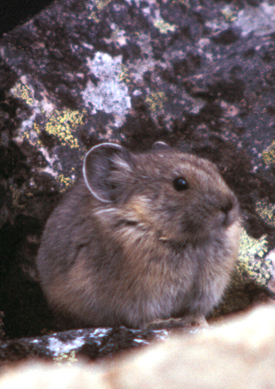The main threat? A warming climate.
The University of Washington's Donald Grayson looked at sites in the Great Basin area of the southwestern U.S., showing that as the climate warmed up over the past 40,000 years, the ranges of pikas shrank, with the pikas moving farther up mountains. In areas where they once lived 5,700 feet above sea level, they now tend to live higher than 8,000 feet.
You can find more details about his study in this story from the Environmental News Service.
Pikas live in boulder fields on mountains. They spend the summer collecting grass and drying it into hay, which they store for the winter. They live close together in big groups. If you hike close to one, it'll let out an alarm call like this.
They don't hibernate in the winter, but stay in their dens, eating the hay.
And they're cute too:

National Park Service photo
No comments:
Post a Comment